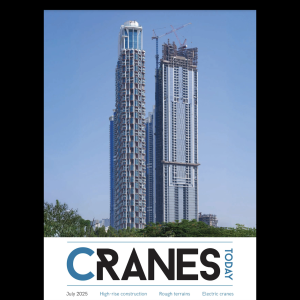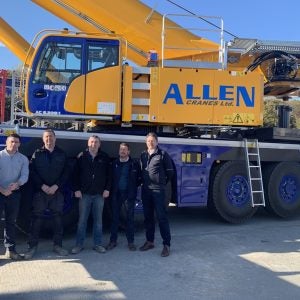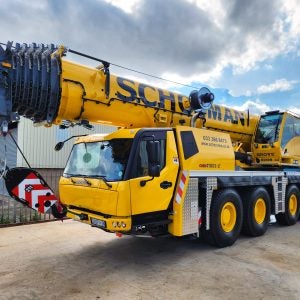The only non-motorway dual carriageway section of the A74 between Carlisle and Guards Mill is being upgraded to a dual three-lane motorway. The aging Mossband Viaduct over the West Coast Main Line is being replaced by a new motorway bridge.
The ground conditions are characterised by a sequence of soft alluvial clays, peat, sands and gravels overlying a sandstone formation with its upper horizon ranging from dense sand to weathered sandstone at depths varying across the site between 14m and 28 m below platform level.
Due to the extent of these soft alluvial deposits, the new bridge structure and adjoining road embankments require substantial foundation construction works. The techniques being employed range from ground improvement by vertical drains and piled foundations, such as vibrated concrete columns (VCC) and continuous flight auger piles (CFA) for the road embankments to large diameter bored piles for the actual bridge structure.
As Network Rail’s stringent safety requirements restrict the height of any unsecured plant in the immediate vicinity of the railway line to the operating distance between the plant and the railway line’s safety envelope, the maximum permissible mast height is limited in some areas of the site to just 7.50m, precluding the deployment of a standard continuous flight auger system.
The only rotary drilling rig capable of meeting the challenge of installing 510 mm diameter piles with a 7.50 m mast to depths of up to 28 m is the new Bauer MG 20 low-headroom segmental flight auger rig.
Carillion Piling Limited have appointed Bauer Maschinen to supply two Bauer MG 20 low headroom rigs together with all necessary drilling tools and pile testing equipment to install 1055 of the 510 mm diameter continuous flight auger piles immediately adjacent to the railway line as Segmental Flight Auger (SFA) piles with formation levels ranging between 14 and 28 m below platform level.
The contract is being carried out by Carillion Piling in partnership with Bauer Maschinen who are providing full technical support for the new rigs.
Although the 220 mm internal diameter of the hollow stem augers facilitates the installation of reinforcement cages prior to concreting, the Engineer’s design required 360 mm diameter cages. As a result, the 12 m long reinforcement cages are inserted into the fresh concrete immediately after pile installation.
The new MG 20 low-headroom rig, which is powered by a 129 kW power unit, delivers 200 kNm torque with its MDK132 rotary drive and BTM200 torque converter. The operating weight of the MG 20 ranges from 30 tonnes for a 7.5 m mast to 36 tonnes for a 16 m mast. In addition to the main winch with a line pull of 100 kN and a 30 kN auxiliary winch, the MG 20 is equipped with a chain drive capable of generating both a crowd and an extraction force of 120 kN. On a 7.5 m mast the rig has a 3.5 m stroke facilitating the installation of 2.5 m long sectional augers. Four outriggers stabilise the rig during pile installation and, in addition, increase the rig’s manoeuvrability in confined site conditions.
Concrete, stored on site in stationary concrete mixer drums, is delivered into the hopper above the rotary drive by a concrete pump and placed in the pile under gravity as the auger is withdrawn. This process ensures the formation of a pile with a uniform shaft diameter over its entire length. To prevent wastage of concrete every time an auger section is removed, delivery of concrete into the hopper is controlled by the rig operator with the help of a camera mounted at the top of the hopper. Auger sections are stored in a purpose-built auger rack that can be moved around the site by the rig and placed on the working platform in close proximity to the rig for direct access.
The MG 20 is fitted with Bauer’s B-Tronic electronic monitoring and control system. In addition to producing an accurate record for each pile by collecting process related and relevant machine operating data throughout the installation process and storing these in the onboard computer, the B-Tronic system allows the operator to switch to automatic drilling mode by which operating parameters, such as auger speed, rate of penetration and torque are optimised relative to each other. It also enables the operator to intervene at any stage and return to manual control. Criteria for attainment of the specified drilling depth were agreed with the engineer and are used by the operator in deciding at what level to terminate drilling operations.
The results of pile tests carried out on a number of test piles prior to the installation of works piles confirmed that the capacity of the SFA piles exceeded the specified design capacity of 1000 kN. Production rates for a 7.5 m rig ranged between 60m and 80m per shift and between 80m and 100m for a 10m rig, increasing to between 100m and 150m for a 16m rig.
Bauer rigs bore piles next to railway line Bauer rigs bore piles next to railway line






